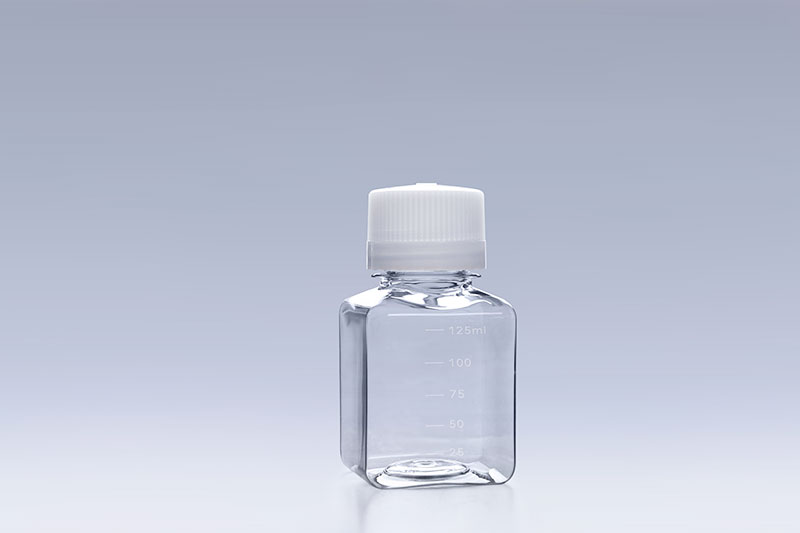As a storage container, PETG media bottles are mainly used for storage of various media, serum, reagents and other solutions, which are basically common solutions in cell culture experiments. It is generally processed from PETG material, so what requirements should this raw material meet?
As a solution storage container, enterprises pay more attention to the compatibility of materials and solutions when purchasing, so as to ensure that the liquid will not react with packaging materials during storage, or the solution will be affected by the precipitates in the raw materials.
FuDau 125ml Square PETG Media Bottles
The raw materials of PETG media bottles generally meet the requirements of USP Class VI medical polymer materials. Medical polymer materials refer to polymer materials used to manufacture human internal organs, external organs, pharmaceutical dosage forms and medical devices, and their sources include natural biopolymer materials and synthetic biopolymer materials. There are 6 levels in USP Class I - USP Class VI in the US plastic classification test. The plastics rated as the sixth level of US medical plastics means that a very comprehensive and strict test has been established. Its test items include systemic toxicity test (mice), intradermal reaction test (rabbit), implantation test (rabbit). Grade VI is the gold standard for various medical-grade raw materials, and it is also a very high-quality choice for medical device manufacturers.
The above are the standards and requirements that PETG media bottles raw materials should follow. In addition to paying attention to this point, when purchasing bottles, enterprises should also pay attention to the overall control of product quality by suppliers, such as production process, quality inspection, etc., to ensure product quality.
The FAI climbed 5.9 percent year-on-year in the first 11 months of 2018, quickening from the 5.7-percent growth in Jan-Oct, the National Bureau of Statistics (NBS) said Friday in an online statement.
The key indicator of investment, dubbed a major growth driver, hit the bottom in August and has since started to rebound steadily.
In the face of emerging economic challenges home and abroad, China has stepped up efforts to stabilize investment, in particular rolling out measures to motivate private investors and channel funds into infrastructure.
Friday's data showed private investment, accounting for more than 60 percent of the total FAI, expanded by a brisk 8.7 percent.
NBS spokesperson Mao Shengyong said funds into weak economic links registered rapid increases as investment in environmental protection and agriculture jumped 42 percent and 12.5 percent respectively, much faster than the average.
In breakdown, investment in high-tech and equipment manufacturing remained vigorous with 16.1-percent and 11.6-percent increases respectively in the first 11 months. Infrastructure investment gained 3.7 percent, staying flat. Investment in property development rose 9.7 percent, also unchanged.
 English
English



















































